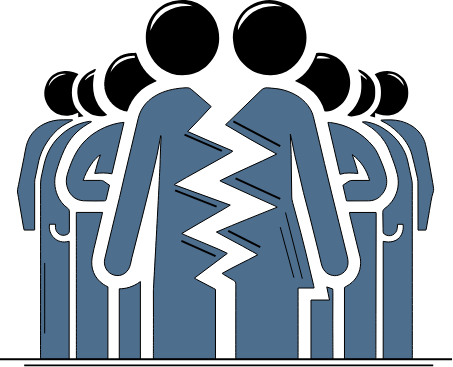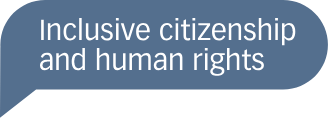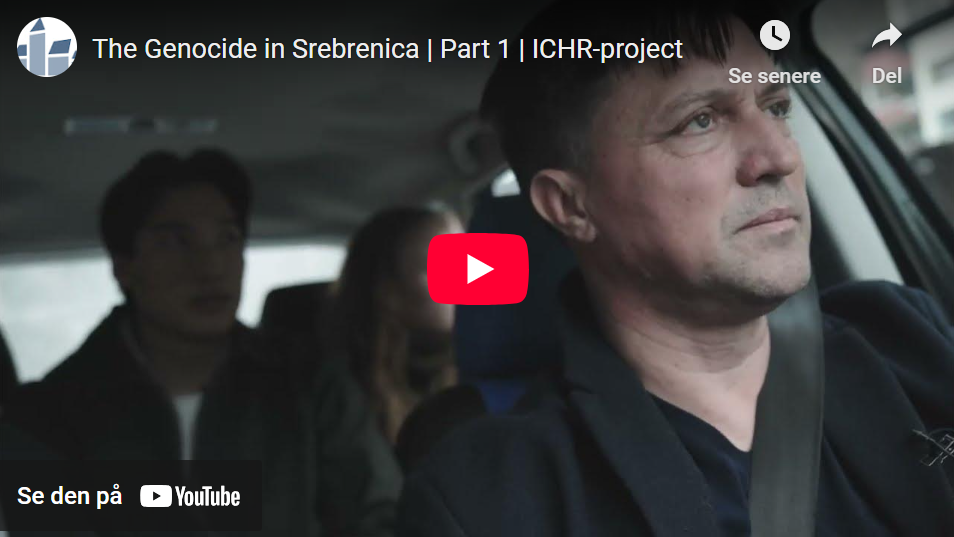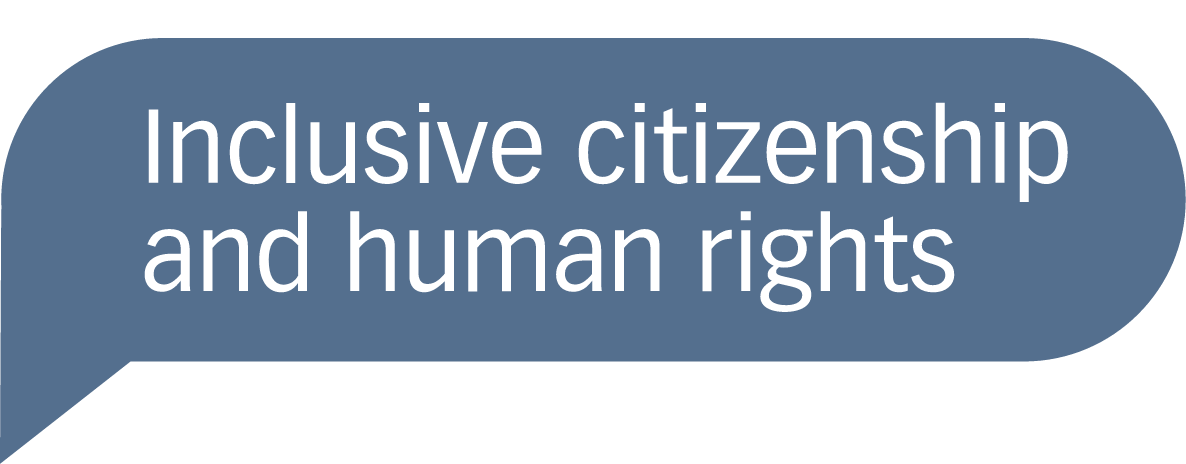Course: Genocide and Group Hostility
Module 1: Genocide
How is genocide defined in international law, and what distinguishes genocide from other mass atrocities?

There are major differences in political contexts, distinctive features, and scope of the mass violence perceived as genocide. Nevertheless, one can identify certain common features of genocide. The formulations and established interpretation of the UN Genocide Convention will serve as a basis for discussion.
What is Genocide?
How is genocide defined in international law? What distinguishes the legal definition of genocide from other definitions of the crime?
According to the 1948 UN Genocide Convention, “genocide” refers to violent crimes committed against a group – in whole or in part – with the intent to destroy it based on its religious, national or ethnic identity. As an international crime, signatory nations agreed to “undertake to prevent and punish” genocide. Acts that constitute genocide, as specified by the Rome Statute of the International Criminal Court and the Genocide Convention, include:
- Killing members of the group;
- Causing serious bodily or mental harm to members of the group;
- Deliberately inflicting on the group conditions of life calculated to bring about its physical destruction in whole or in part;
- Imposing measures intended to prevent births within the group;
- Forcibly transferring children of the group to another group.
The term Holocaust refers to:
- the genocide of European Jews by Nazi Germany during World War II (1939-1945),
- the systematic mass murder of Roma and individuals with mental disabilities,
- the persecution of homosexuals and political dissidents.
In line with the Nazi racial ideology, the Wannsee Conference in 1942 reaffirmed/sanctioned ex post facto the “Final Solution of the Jewish Question,” meaning the extermination of the Jewish people and their culture in Europe and beyond.
Approximately six million Jews were murdered in a systematic, bureaucratic, and industrially executed genocide. In countries like France and Israel the preferred term is Shoah, rather than Holocaust.
According to the legal definition of the crime, intent is central to identifying genocide. Without proof of the intent to destroy a group “in whole or in part” solely because of their identity, the acts of mass violence in question fall under crimes against humanity.
There have been many definitions of genocide proposed throughout the years. They can mainly be distinguished between legal, sociological, political, and popular definitions, according to genocide scholar Ernesto Verdeja. In short:
- The international Genocide Convention contains the legal definition of the crime, adopted in response to the Holocaust. Major powers that negotiated the draft convention in the United Nations aimed to prevent such atrocities from recurring while deferring scrutiny from the treatment of minority groups in their own countries. Because of realpolitik, the wording of the convention is rather restrictive.
- Sociological definitions of genocides are usually broader, including targeted groups beyond the few outlined in the definition. The intent to commit genocide has a lower threshold.
- Political definitions are used to rally consensus and encourage specific responses, often with the goal of prevention or intervention. As Verdeja states, “many international organizations and governments will use the term genocide when what they really mean is large-scale violence against civilians.”
- Popular definitions often incorporate the emotional response to mass violence. When acts of violence are committed, the general public tends to highlight their reprehension and immorality, calling for intervention so that they can be stopped.
Genocide vs. Other Mass Atrocities
Under international law and as defined by the Rome Statute of the International Criminal Court, mass atrocities occur in the form of genocide, crimes against humanity, ethnic cleansing, and/or war crimes. What make genocide distinct from the other categories of mass atrocities?
According to the Rome Statute of the ICC, what distinguishes mass atrocities from other violent crimes is the scale of their perpetration and the inhumane violence and rhetoric that they entail.
- Crimes against humanity
Crimes against humanity include known acts “committed as part of a widespread or systematic attack directed against any civilian population”, such as murder, enslavement, deportation, torture, sexual violence and slavery, apartheid, and persecution. Most atrocities can often fall under the meaning of “persecution”, which could amount to genocide if the intent to destroy a group, in whole or in part, is demonstrated.
- War crimes
War crimes can include violations of the laws and customs applicable in international armed conflict, such as breaches of the Geneva Conventions of 12 August 1949. Individual responsibility for war crimes can be established if violations against members of a group take place in the context of an (international or non-international) armed conflict, regardless of whether the victims are combatant or non-combatant.
- Ethnic cleansing
While not recognized as an independent crime under international law, ethnic cleansing is considered to include coercive practices meant to render an area ethnically homogeneous by removing members of ethnic or religious groups. If the necessary criteria are met, these acts may amount to one of the recognized atrocity crimes. The Responsibility to Protect (R2P) norm, spelling out the normative responsibility to protect people from atrocities and prevent them, expanded the concept of ‘atrocity crimes’ to include ethnic cleansing in the 2005 World Summit Outcome Document.
Key Cases
In the last 30 years, genocides have been carried out, despite the pious declarations of “never again” stated by various national and international bodies in the aftermath of the Holocaust. Although atrocity crimes have been perpetrated globally, legal prosecution of genocide has only been attempted twice, by the International Tribunals for the former Yugoslavia and Rwanda. Genocide was also prosecuted by national courts, for example in Rwanda.
The Rwanda genocide directed against the Tutsi
The genocide in Rwanda took place between April and June 1994. The Hutu government, representing the majority population in the country, launched a planned genocide against the minority Tutsi population. Ethnic conflicts between the Hutu and Tutsi have a long history and go back to the time before Rwanda’s independence in 1959.
In 100 days between April and June 1994, between 500,000 and one million people were systematically murdered. Most victims were Tutsi, but also the minority Twa and politically moderate Hutu became victims of the genocide.
The mass killings were planned and organized by the Hutu-dominated agencies. Many of the perpetrators were ordinary people who killed their friends and neighbours within local communities.
The UN and major western democracies were heavily criticized for having failed to stop the mass murder. In 2000, the UN Security Council took responsibility for not having done so. The UN General Assembly, in 2014, formally classified the Rwandan massacres as genocide.
The Srebrenica genocide in Bosnia-Herzegovina
The violent dissolution of former Yugoslavia in the 1990s resulted in war and widespread mass violence targeting multiple ethnic groups. Much of this violence has since been recognized as atrocity crimes, which in the case of Srebrenica amounted to genocide.
In July 1995, approximately 8,000 Muslim men and boys were systematically massacred by Bosnian-Serbian soldiers in the Bosnian town of Srebrenica. The International Court of Justice in 2007 defined the Srebrenica massacre as a case of genocide.
In Srebrenica, in July 1995, approximately 8,000 Bosniaks (Bosnian Muslims) men and boys were killed within two weeks by Bosnian Serb military forces. The massacre was in line with the political goal of Bosnian Serbs to establish an ethnically and religiously homogeneous national entity in Bosnia, regardless of the fact that the local population consisted of Bosniaks, Serbs (mostly Orthodox Christians), and Croats (mostly Catholics).
The Srebrenica massacre was decisive in provoking the NATO intervention that in turn led to the Dayton Agreement, which ended the Bosnian War in 1995.
Certain segments of the Bosnian Serb and Serbian population, largely politicians and political narratives, deny that a genocide took place. This is, for example, reflected in school curricula.
The role of the International Criminal Tribunal for the former Yugoslavia (ICTY) for the prosecution of the mass atrocities in Srebrenica will be discussed further in Module 4 – Restoration.
The Srebrenica-Potocari Memorial Center acts as a place of remembrance for the victims of the genocide in Srebrenica, and is dedicated to preserving history and combatting the ignorance and hatred which make genocides possible.
The Yazidi Genocide in Iraq
Genocide involves the intent to destroy a racial, religious, ethnic, or national group. The Independent International Commission of Inquiry on Syria (2016) emphasized in the report “They Came to Destroy: ISIS Crimes against the Yazidis” that ISIS tried to destroy the Yazidi as a religious group, and has accordingly identified the Yazidi as victims of genocide.
In August 2014, more than 6,000 Yazidi men and boys were massacred in the Sinjar region in northern Iraq. Women and children were captured, raped and sold as sex slaves. The Islamic State (IS) regarded the Yazidis as heretics and devil worshipers who had to be killed or forced to adopt a strict interpretation of Islam, with many being later killed.
The IS terror also affected several religious groups. However, no other group but the Yazidi was singled out and persecuted as systematically, with the stated intention of extermination because of their faith. The UN commission of inquiry referred to the Yazidi case as genocide.
ISIS is a terrorist group that follows a fundamentalist, Salafi-jihadist doctrine of Sunni Islam. The group has been declared a terrorist organisation by the United Nations. The group was defeated in 2019 on their unrecognised “state” territory inside Syria and Iraq. Fragments of ISIS are still carrying out terrorist activities.
Genocide or other mass atrocities?
Because of the strict legal definition of genocide, only a few instances of mass violence have ever been identified as such. In recent years, cases like Myanmar’s ethnic cleansing of Rohingya people, Russia’s aggression against Ukraine, and Israel’s mass atrocities in the Gaza Strip have put the limitations of the Genocide Convention in sharp relief. The adjudication of these cases by the International Court of Justice and the International Criminal Court will be discussed further in Module 3 – Prevention.
An ICJ ruling on the state duty to prevent genocide cannot be enforced to stamp out genocide. However, we will explore the possible measures taken in response to genocide and other mass atrocities in Module 4 – Restoration.
The case of Rohingyas from Myanmar – ICJ
In 2019, The Gambia accused Myanmar of targeted mass violence against Rohingya people and requested provisional measures of protection from the ICJ. The ICJ in 2020 ruled that Myanmar should take measures to prevent genocide from happening to the Rohingya.
The Rohingya people are an ethnic group native to Myanmar (previously Burma), but since the 1980s officially recognized as illegal migrants by the Burmese government. Rohingyas have faced decades of discrimination and persecution, also at the hands of other ethnic groups in the Rakhine state.
Following the attacks by Rohingya insurgents on Burmese authorities in late 2016, the Myanmar military and paramilitary groups began a large-scale campaign of killings and rapes.
The latest wave of mass violence in 2017 sent more than one million Rohingyas to the Cox’s Bazaar refugee camp across the border in Bangladesh, the largest such camp in the world. In 2018, the UN High Commissioner for Human Rights reported that Myanmar’s government organized and planned the intentional eradication of the Rohingya people, and that its officials could be potentially charged for ethnic cleansing and genocide.
The case of Palestine/Israel – ICJ and ICC
In 2023, South Africa alleged that Israel has been committing genocide against Palestinians in the Gaza Strip, and initiated a case at the International Court of Justice. In 2024, the ICJ ruling advanced provisional measures urging Israel to prevent genocide and protect civilians from further atrocities. This case will be further presented in Module 3 – Prevention.
In November 2024, the International Criminal Court (ICC) issued arrest warrants for Israeli and Hamas leaders, having confirmed there are reasonable grounds to believe that Rome Statute crimes have been committed.
Following the murder of Hamas leader Al-Masri (Deif), the prosecutor’s office has terminated its proceedings against him.
Gender and Genocide
While not mentioned in the legal definition of genocide, gender is an important factor that can affect the motivations, perpetration, and consequences of genocide. How does it influence how certain groups are mobilized and attacked during genocides?
The term “gender” denotes the social, cultural, and psychological aspects of one’s identity as opposed to sex, which is considered concretely physical and biological. While it is often used as a buzzword and a synonym for “women” in conflict, security, genocide, and atrocity prevention studies, gender encompasses multiple identities and the socio-cultural system they inhabit.
Women and children affected by genocide - Lamiya's story
Lamiya
As conflicts and mass violence have always been affected by gender dynamics, US philosophy professor Mary Anne Warren coined the term “gendercide” to refer to the deliberate extermination of persons of a particular gender.
Gendered violence and killings can be understood as components of genocidal acts, carried out with the intent to destabilize or eradicate populations. However, the term gendercide applies more broadly and is not confined solely to acts of genocide. Warren’s website gendercide.org provides multiple case studies (e.g. Rwanda and Bosnia-Herzegovina) where she argues that “gendercide” has taken place.
Gender-based violence targeting women often includes sexual violence and mass rapes with the goal of forced impregnation or stigmatization. Male-targeted violence, may occur in conflict settings where adult and adolescent males are singled out as actual or potential combatants. While such killings are not always framed as gendercide, it can be applied in contexts such as the Srebrenica genocide, in which almost 8’000 Bosniak men and boys were systematically executed.
It is worth noting that, while Warren argues that the term gendercide can help with nuanced and complex analyses of genocides, others argue that it may obscure ways in which genocides are perpetrated, as proposed by Henry Theriault. According to this perspective, “gendercide” analyzes genocides only by their results, partially ignoring the intersecting factors and motivations which provoked them.
Sexual- and gender-based violence belongs under discussion on genocide as a strategy to destroy a group. In 2018, the Global Justice Center launched an in-depth legal analysis of the role of gender in genocide. Read the full report here.
An often overlooked gendered consequence of sexual violence in conflicts and mass atrocities are Children Born of War (CBOW). We will explore this in more detail in Module 4 – Restoration.
Questions for reflection and discussion
- What distinguishes genocide, as defined in the UN Genocide Convention, from other mass atrocities?
- What role has gender played in past genocides? How can a gender perspective shed light on the consequences of genocide? How were women and men affected differently in the three main cases we address here: The Rwanda genocide, The Srebrenica genocide and the Yazidi genocide?
- Case study discussion: Do the facts from the case studies presented above demonstrate genocide according to Article II of the Genocide Convention? If not, do they comply with the definition of other mass atrocities? Using available resources, argue for or against identifying a particular case of mass violence as genocide.
For educators
- When teaching about genocide, be aware of the various definitions of this term.
- Make sure to clarify the definition of your choice to the students, and make them aware that there are other ways to define the term.
- Students in higher education should also be taught about the difference between genocide and other mass atrocities.
- For more information and resources about inclusive citizenship education please see our For Educators page.
Additional Resources
Genocide and other mass atrocities
- ICHR topic page: Understanding Genocide and Mass Atrocities
- Website: Mass Atrocity Responses
- Hinton, Alexander Laban. 2012. “Critical Genocide Studies.” Genocide Studies and Prevention: An International Journal 7 (1). (link)
- Jones, Adam. 2024. Genocide: A Comprehensive Introduction. 4th ed. London; New York: Routledge, Taylor & Francis Group.
- Weiss-Wendt, Anton. 2018. A Rhetorical Crime. Rutgers University Press. (link)
Gender
- ICHR topic page: Gender and Genocide
- Asraph, Sareta. 2018. Beyond Killing: Gender, Genocide, and Obligations Under International Law. Global Justice Center. (link)
- Connellan, Mary Michele. 2018. “The Problem of ‘Protecting Vulnerable Groups.’ Rethinking Vulnerability for Mass Atrocity and Genocide Prevention.” In A Gendered Lens for Genocide Prevention. London: Palgrave Macmillan UK. (link)
- Joeden-Forgery, Elisa. 2012. “Gender and the Future of Genocide Studies and Prevention.” Genocide Studies and Prevention: An International Journal 7 (1). (link)
- Jones, Adam. 2008. “Gender and Genocide.” In The Historiography of Genocide, 228–52. Palgrave Macmillan. (link)
Case studies




